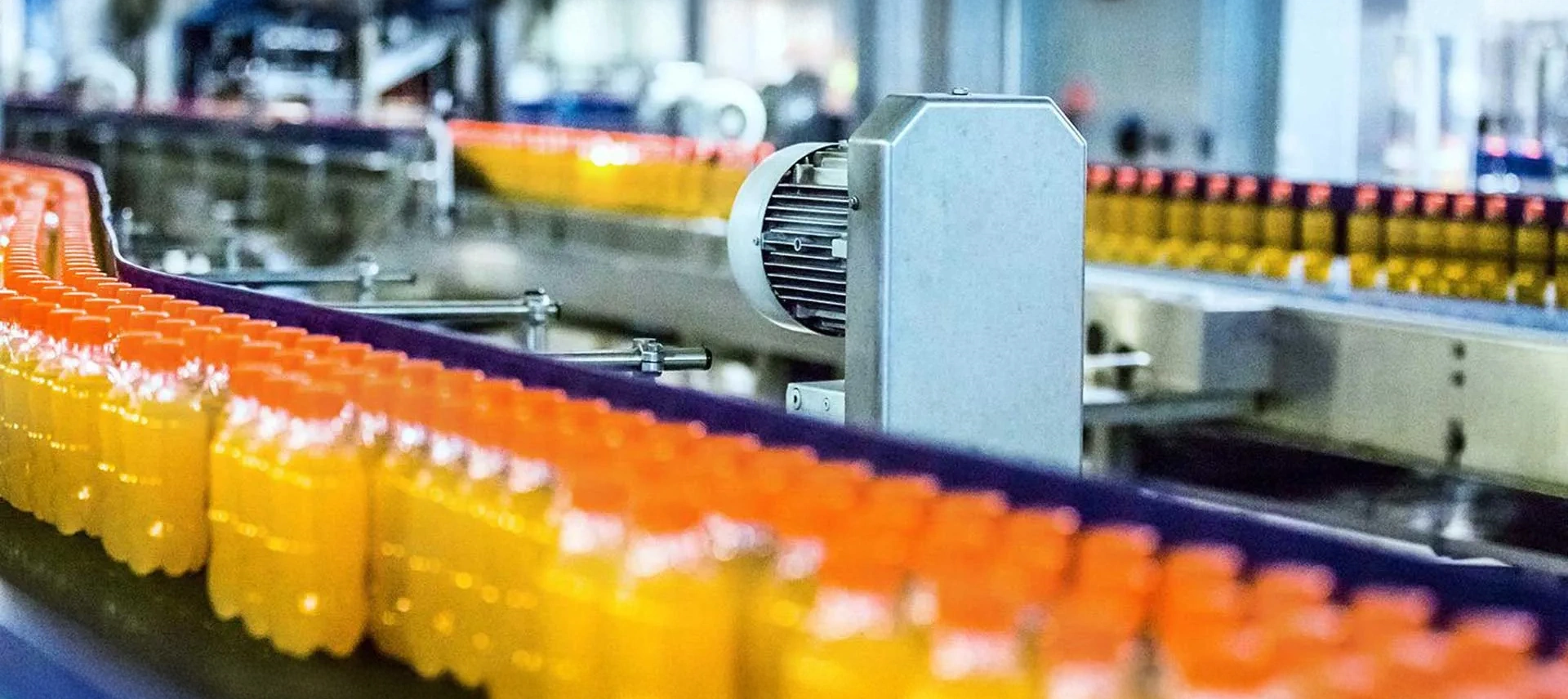Packaging Suppliers
Differentiate your value proposition while you optimize production efficiency and reduce materials costs
Transforming the Consumer Packaging Industry Through Digital Innovation
First impressions matter — and packaging makes them. In fact, 72% of US consumers purchase based on the packaging design¹, and up to 70% of consumers are willing to pay more for sustainable packaging². Packaging doesn’t just protect a product: It defines value.
But today, packaging comes with higher stakes. Brands expect faster launches, lower costs and more sustainable materials, while packaging suppliers navigate costly production, tighter timelines, complex material sourcing and the need for standout designs. With little room for error, sustainable packaging design must be right the first time.
So, how do we unbox success? Digital innovation. Beyond bringing bold ideas to life, digital innovation in the consumer packaging industry reduces risks, accelerates breakthroughs and meets brand and consumer demands without compromise.
Solve Key Challenges in the Consumer Packaging Industry
The global packaging industry is surpassing USD 1 trillion³ today. In a space so competitive and challenging, a smart packaging technology on a unified platform is urgently needed, as fragmented systems can no longer tackle key challenges efficiently and effectively.
- Accelerating Time-to-Market
- Cost and Material Constraints
- Supplier & Brand Collaboration
- Sustainable Packaging Design
- Regulatory Compliance
Accelerating Time-to-Market for New Packaging Designs
79% of companies say consumer demands are changing faster than they can keep up. Meeting time-to-market pressures often means conducting extensive market research, establishing efficient collaborative packaging development and building agility to adapt to changes.
It requires the speed and ability to:
- Simulate and validate designs early (before production), reducing costly prototypes and speeding up innovation cycles
- Balance aesthetic and practicality challenges that meet demands, especially with new formulations
- Manage supply chain disruptions, rising material costs, workforce planning and continuous quality control
- Leverage technology, such as automation and AI in packaging design, to speed up production
- Ensure speed does not compromise consistent branding through packaging design optimization tools
In this volatile consumer packaging industry, slow responses risk your innovative ideas being replaced by faster, more agile brands.
Design Profitable and Sustainable Packaging
Innovate every step of your sustainable packaging journey, driving profitability with an end-to-end strategy, powered by the 3DEXPERIENCE® platform.
Responding to Cost and Material Constraints
Sustainable packaging is often seen as expensive. But much of the real cost lies in inefficiency, such as the overuse of raw materials and costly prototyping, which erode profit margins.
For example, a study showed that minimizing bottle weight by 8% reduces about 1.6 million tons of material use annually, translating to savings of more than US$3 billion per year⁴.
That is why the right packaging innovation software and virtual testing for packaging can identify savings and deliver long-term benefits. Suppliers can:
- Optimize packaging form, fit and material usage to balance performance costs and sustainability
- Reformulate alternative materials with data-driven insights
- Simulate and validate design virtually to achieve performance and quality before prototyping
- Localize production to reduce shipping and logistics costs, and carbon footprint
Instead of absorbing rising costs, suppliers who embrace digital transformation in packaging will not only balance efficiency and cost but also achieve greater performance and sustainability.
Accelerate Packaging Design With AI
Packaging for consumer goods has to meet many different requirements, including cost, weight, strength and sustainability. Machine learning enables packaging manufacturers to understand the impact of design changes much faster than traditional simulation methods allow, and to rapidly explore the entire design space to find innovative new packaging designs.
Improving Supplier and Brand Collaboration
Aligning and creating a close connection within internal multidisciplinary teams (R&D, design, supply chain teams) and between suppliers and brands, can unlock significant value, speed and agility in today’s consumer packaging industry.
Yet, legacy systems and geographical locations often hinder this collaboration, making it almost impossible to share data in real time. This misalignment:
- Slows down design iterations
- Reduces agility to respond to changes
- Generates excessive waste from poor planning
The challenge is amplified as sustainable packaging design and customization grow, demanding more variations of shapes, sizes, purposes and formulations. Suppliers cannot afford to lose out on collaboration. Instead, they need to explore together eco-friendly packaging solutions and leverage consumer packaging simulations to scale up winning designs quickly.
In a nutshell? To thrive in the era of complexity, suppliers need the speed, visibility and seamless collaboration that only a unified platform can deliver.
Improving Supplier and Brand Collaboration
Watch Video
Enabling Sustainable and Circular Packaging Design
Packaging accounts for 40% of the world’s plastic waste⁵. The imperative for sustainable and circular economy packaging design is clear: Adopt eco-design practices to reduce environmental impact, support recyclability and drive innovation in materials.
Consumers and regulators are demanding greater circularity — banning single-use plastics and pushing for more eco-friendly packaging solutions that benefit both people and the planet. At the same time, new frameworks, such as the Ecodesign for Sustainable Products Regulation (ESPR) and the Digital Product Passport (DPP), are raising the bar by requiring packaging lifecycle management data for every package.
The challenge runs deeper. Circular designs, such as lightweighting, new alternative biodegradable formulations and recyclable materials, all depend on end-to-end traceability.
Without accurate, real-time data, innovation slows down and proper disposal or recycling efforts fail. Manual, fragmented and siloed workflows keep data outdated and disconnected. Without digital tools, the goal of circular packaging design remains out of reach.
Enabling Sustainable and Circular Packaging Design
Infuse circular principles into product development through sustainable materials that are recyclable and biodegradable by design.
Managing Regulatory and Labeling Compliance at Scale
From concerns about ocean leakage and waste disposal to ambitious circular economy targets, global packaging regulatory standards are becoming increasingly stringent. Ensuring product and packaging conformity across global markets through centralized compliance data has never been more complex.
Navigating these diverse regulations and labeling rules is further complicated by the:
- Absence of a common terminology used across countries globally, leading to inconsistent standards
- Poorly defined categories, exposing suppliers to potential overlaps and duplicate regulations of the same scope
- Unclear division of regulations either by federal, state or city-level authorities
- Strict labeling requirements with agencies, such as the Food and Drug Administration (FDA), leave zero room for error — the right label must be on the shelf every time
What happens when suppliers can’t keep up? The potential consequences are severe: Further tax increases, penalties, costly product recalls and irreparable brand damage. Without a connected packaging compliance software, execution weakens and the product may never reach the market.
The Sure Answer to Quality and Compliance Management
Improve lab processes to ensure faster product delivery and to regulate demand.
Drive Efficiency With the 3DEXPERIENCE® Platform
Dassault Systèmes’ virtual twin experience, powered by the 3DEXPERIENCE platform, enables packaging leaders to innovate smarter and faster through:
Virtual Twin for Packaging Development
Simulate the full lifecycle of a packaging concept to optimize performance, manufacturability and sustainability.
Collaborative Packaging Design Management
Leverage a cloud-based design platform to align packaging engineers, designers and brand teams.
Data-Driven Innovation with AI and Analytics
Capture trends and benchmark performance across designs to continuously improve.
Key Benefits of Dassault Systèmes for the Consumer Packaging Industry
Shorter Packaging Innovation Cycles
Accelerate design and validation workflows while improving traceability and accuracy.
Enhanced Regulatory Readiness
Maintain up-to-date specifications and certifications to streamline global market approvals.
Sustainable Packaging by Design
Embed environmental considerations early in the development cycle through digital modeling.
Better Collaboration Across Stakeholders
Improve speed and transparency with synchronized teams, data and decisions.
Lower Costs and Resource Usage
Reduce waste, overengineering and physical prototypes by adopting virtual simulation.
Faster Time to Market
Launch innovative packaging fast by streamlining processes from concept to commercialization.
Discover How Industry Leaders Succeed

Elidose
Learn how this flexible packaging specialist tackled volatile demand and last-minute deliveries with scheduling optimization, enabling seamless design-to-manufacturing collaboration and cutting changeover time to boost agility.

Metsa Board
See how lowering carbon emissions by over 40% and delivering eco-friendly, lightweight designs to consumers up to 85% faster became possible through streamlined packaging development powered by virtual twins.

Amcor Rigid Packaging
Find out how reducing time to market and enhancing global coordination went hand in hand with material and energy savings — accelerating packaging innovation in lightweight bottles by 35 to 50%.
Consumer Packaging Industry Explained
Consumer Packaging Industry Explained
Discover More About Consumer Packaging Industry Solutions
Sources
¹Source: Ipsos
²Source: McKinsey & Company
³Source: McKinsey & Company
⁴Source: MDPI
⁵Source: Our World in Data
⁶Source: Tesco
⁷Source: Coca-Cola






